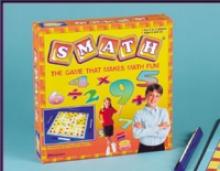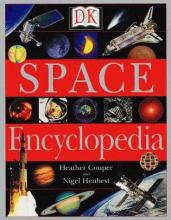No name
Smath: The Game that Makes Math Fun
Smath is a very similar game to Equate. It comes with a game board, 4 plastic tile racks and plastic tiles with a bag for the tiles. Tiles: 6 each of numbers 0-12, 10 blanks, 36 equal signs, 9 each of addition, subtraction, multiplication and division signs, and 12 clear parentheses that stack over another tile when used. There are no fractions or decimal points. Each player draws 10 tiles per turn. Game play is similar to Scrabble, but equals sign and parentheses tiles are kept separate and can be used as needed. This prevents game play from stalling.
Smith of Wootton Major & Farmer Giles of Ham
Snow Treasure
Solanus Casey
Solanus seemed to handle each need, each set of worried eyes, delicately but effectively. He radiated a sense that God cared about all those things. He often laid hands on those sick and prayed for a healing then and there. And his promises of prayer for individual intentions were more than polite words. He began to spend extended time in the chapel after office hours and his Capuchin house commitments were fulfilled. pg 108Odell’s book details all the many little things Casey did for others. Through illnesses, painful and debilitating, Fr. Solanus continued to minister to those in need. His story, as told through Odell’s prose, is one of the most beautiful, Christ-filled books I’ve read in a long time. The reading is simple – as was this man – and yet it details a life so filled with God’s love and charity to others – a charity that had the good Father reminding everyone to “Thank God” as he showed them out the monastery door.
During the Depression, the Capuchins opened a soup kitchen in Detroit. This man of simple faith was told that there was no more bread to serve the crowd of people waiting.] “Just wait and God will provide.” Fr. Solanus said an “Our Father” after inviting the men to join him in prayer. We just turned around and opened the front door … a bakery man was coming with a big basket full of food … when the men saw they they strated to cry … Fr. Solanus in his simple way, said, “See, God provides. Nobody will starve as long as you put your confidence in God, in Divine Providence.” pg 132This book captures the love and charity I want my own children to have; the simple faith that I’m trying to pass on to my family. I’m sure my children will remember Venerable Solanus Casey for many years to come, thanks to this book by Catherine Odell.
Something Other Than God
Here's a brief sample from a conversation she had with the man she would later marry:
"I don't see how anyone could look at that and not believe in God", Joe said, his voice lowered as if out of reverence for this masterpiece of nature.We especially enjoyed the humorous stories about her antics as a stubborn kid, such as moving all the Bibles in the library to the "Fiction" section. Yes, God really doesn't give up on anyone! ;)
Maybe it was the influence of the gin and tonic, but I figured that now, when we were both happy and calm, wa sas good a time as any to have this discussion. "You know that I don't believe in God, right?" I said.
Joe kept his eyes on the cloud. "Yeah, I think you said something about that once."
I waited for him to elaborate on that statement; I'd expected more of a reaction. He remained silent, so I asked, "Does that bother you?"
"Nah", he said casually. "You're reasonable, so you'll get over the atheism thing eventually."
Something to Write About, History Edition
The directions, written directly to the student, are broken down into three parts: Early American History for grades 1-3, American History - Discovery through Westward Expansion for Grades 4-6, and World History -Ancient Civilizations through Modern Times for Grades 7-8. The student is directed to compile a book which will include maps, illustrations and compositions that he creates while studying the particular time period. Extensive lists of maps and illustrations to be made are included. But the lists of suggested writing activities are the best parts of the book.
Here are a few samples from each section:
Grades 1-3 - Write a prayer to St. Isaac Jogues; pretend you are George Washington at Valley Forge, write a speech to give to your soldiers to encourage them not to give up; make a chart showing three parts of our government and what they do.
Grades 4-6 - Write a newspaper article about the Louisiana purchase; write a two page expository essay comparing the French and Indian War with the Revolutionary War; pretend you are a soldier in the Civil War and write a three page letter to family at home.
Grades 7-8 - Write an expository essay describing Greek government and how it functioned; write a diamante (poem) about the early Christians just after Jesus was buried and before He had risen.
The second best thing about this book are the definitions of literary terms in the appendix. Each kind of essay required in the book is explained, many different kinds of pattern poems are demonstrated, and common literary terms, such as metaphor and personification, are defined. Your child would learn a lot about writing techniques and constructions by using this guide. The bonus is that the types of writing learned by making the history book can be applied in other learning situations.
The author includes samples of student work from each of the grade level sections. These can be valuable especially if a student is "stuck," or doesn't understand the assignment.
The student keeps the maps, illustrations and compositions he creates in a safe place until it is time to put the book together. The student can choose from several suggested methods for binding the book.
Some of the writing activities for Grades 1-3 would be difficult for a 1st grader and some 2nd graders, but they could easily be adapted. A child could dictate his work, or be required to write shorter versions of the assignment. The program is flexible and designed so that you can pick and choose the activities that best fit the child.
This kind of activity is good on many levels. It gives the student practice in needed skills while doing something meaningful (e.g. learning about metaphor by writing it instead of filling in a workbook). It requires the student to extend his thoughts about the facts he learns, moving him to a higher level of thinking. Best of all, he has a record at the end of the year of all that was learned and accomplished. That is very satisfying for a student of any age.
This book is also available from the author at:
Marge Fenelon,
3558 E. Cudahy Avenue,
Cudahy, WI 53110-1103.
Phone & Fax 414-769-6742
Email: fenelon@execpc.com
1-877-815-0544
Sound Beginnings
The program includes everything you will need including a 500+ page Bible reader, audio tape, flash cards, notebook, parent manual, handwriting paper, worksheets, and a pencil and gripper. Most of the program is non-consumable and could be used with any other children you may have. The lady who developed this modeled it (with her improvements) off of the Spalding method (i.e. Writing Road to Reading). She is a Catholic homeschooling mom with a Montessori background.
Note: The author of this program has used a Protestant Bible because the only Catholic one available that was designed for phonetic readers had just as many (if not more) theological errors as the Protestant one. The introduction to this program provides information on which passages should be corrected.
Space Encyclopedia
We've started working our way through parts of this book as a read-aloud for younger children but have enjoyed it especially for the pictures. It covers everything from the Hubble Space Telescope to the surface and atmosphere of the Sun, Moon and Planets, from Space Pioneers to star maps, from explanations of various types of telescopes to black holes and discussions of the possibility of extraterrestrial life. We've only read a small portion of the text so far, but were pleased to find that the text came out better than expected in several litmus-test areas. The detailed charts on things you can see in the night sky was very helpful.
Spelling for Young Catholics
Seton Home Study has published a full line of Catholic spelling texts. Unfortunately, we have a difficult time providing reviews because we wish only to review the most recent editions and Seton revises their books frequently. You may view sample pages of these books on Seton's Website.




